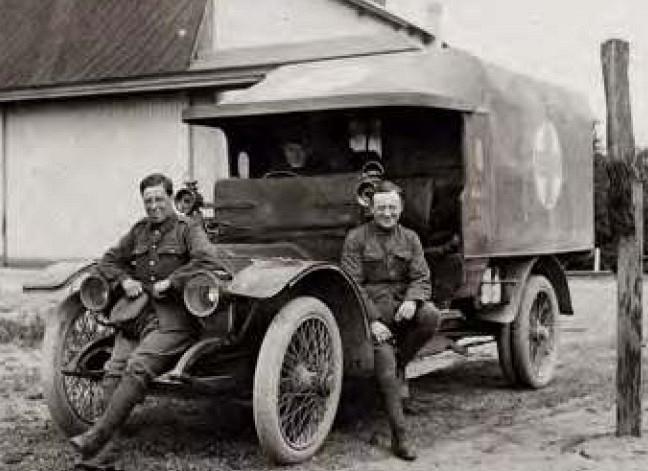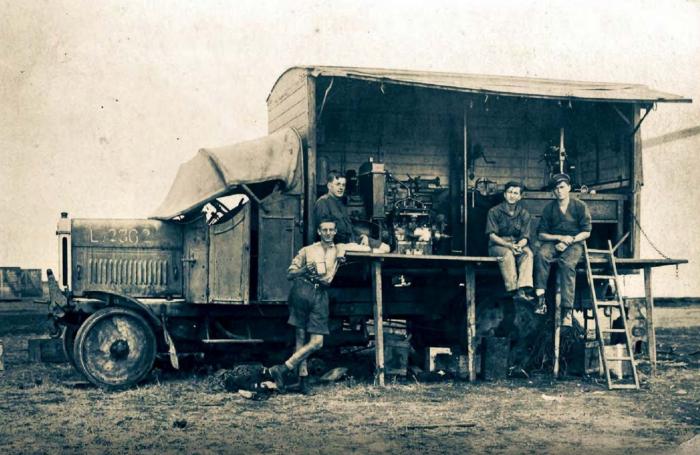Tim Gosling recounts the history of the RAF lorry and its role in World War One
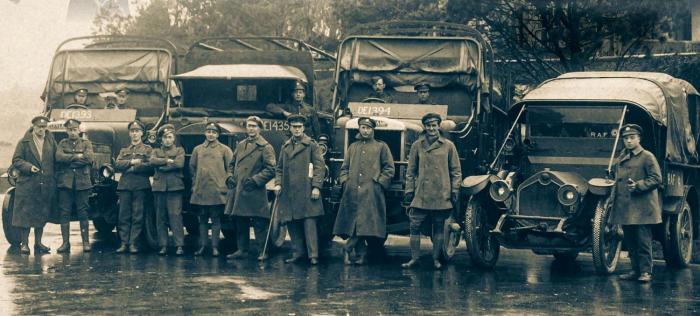
On April 1, 1918, the Royal Flying Corps (RFC) and the Royal Naval Air Service (RNAS) merged together to form the Royal Air Force (RAF) now the world’s oldest independent air force (that is, independent of army or navy control). It provided tangible benefits, not only in the creation of a single command structure but also in the procurement of equipment and aircraft.
Both organisations had sourced their aircraft and vehicles independently of each other which duplicated a great deal of effort and created a certain amount of animosity. The RNAS had arranged an exclusive contract with the renowned Sopwith Aviation Company which supplied it with the latest aircraft at the expense of the RFC.
However, the RFC had an arrangement with the commercial vehicle manufacturer Leyland and bought almost all of the three-ton trucks that could be produced. At a time whenthe availability of new vehicles was somewhat restricted, this left the RNAS to buy an exceptionally diverse fleet of whatever trucks were available (most of which came from the United States) which must have created numerous problems for maintenance and repair.
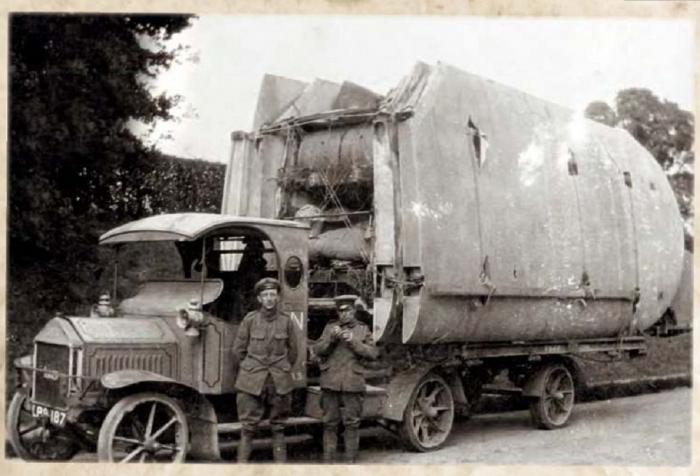
’The British War Department bought their first lorry fitted with an internal combustion engine in 1903’
The origin of British military aviation goes back to 1888 when the War Office established the School of Ballooning within the Royal Engineers to test balloons and airships for military purposes. In 1911, and with the advent of heavier than air aircraft, the balloon school was renamed the Air Battalion Royal Engineers which was divided into two companies, No 1 with ‘lighter than air machines’ (airships and balloons) and No 2 with aeroplanes.
Pilots already had to have already earned their Royal Aero Club Certificate (a precursor to a pilot’s licence) before they joined, but the cost of this would be reimbursed. This organisation would not last very long though. Following the successful use of aircraft by Italy while fighting Ottoman Empire troops in Libya, the British prime minister established a committee of politicians and army and navy officers to consider the use of aircraft.
They proposed that a flying corps be established which, following the receipt of a Royal Warrant, resulted in the creation of the Royal Flying Corps on April 13, 1912. The RFC initially had four wings, a military wing, a navy wing, a central flying school and an aircraft factory. The navy, having different priorities from the army separated its wing on July 1, 1914 to create the RNAS which, the following year, fell under the control of the Royal Navy. Its role was to operate sea planes, airships, coastal reconnaissance aircraft and to develop the concept of the aircraft carrier. With the outbreak of combat on the Western Front it also operated several fighter squadrons and took the lead over the RFC in developing a strategic bombing force.
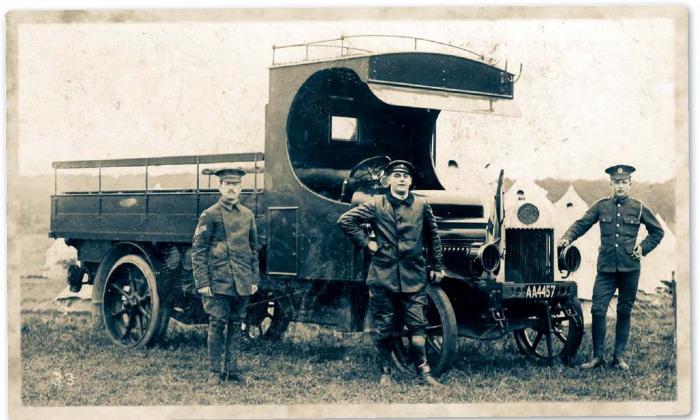

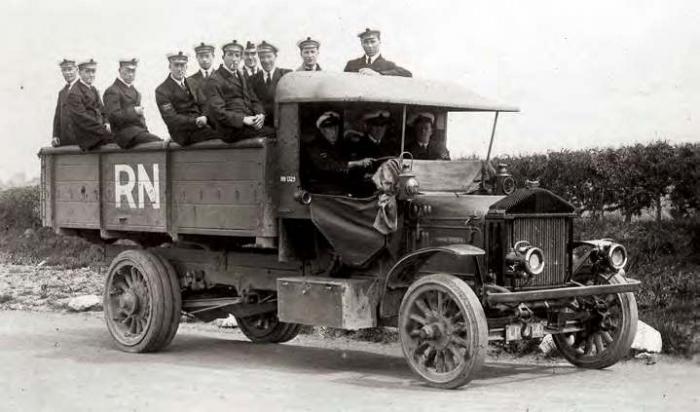
The British War Department bought its first lorry fitted with an internal combustion engine in 1903 (manufactured by the Scottish Company of Stirling) and over the next few years experimented with a variety of other different makes and models.
In 1912 it bought a batch of 30cwt ‘S3’ model lorries for the RFC from the Lancashire-based company of Leyland. These attractive looking machines were the first trucks of the RFC but they would not be around long as their replacement was already under development. In the previous year the War Office had invited manufacturers to design a lorry meeting certain specifications, the purchase of which would be subsidised by the government on the understanding that in times of national emergency it could be impressed by the War Department.
Using the ‘S’ Type engine Leyland designed and built ‘subsidy’ lorries within the three ton (type ‘A’) and 30 cwt (type ‘B’) categories. Both lorries were trialled by the War Department in August 1912 and were accepted into the subsidy scheme with 88 examples having been purchased by April 1913. Shortly after the declaration of war on August 4, 1914 army officers descended on the Leyland factory impressing every vehicle that could be found and directing that all production capacity should now be used for the construction of the threeton subsidy lorry, or as it would become known later, the ‘RAF Leyland’. The 30cwt type B was not found to be as useful as the type A, so its production was discontinued.
The three-ton Leyland was the ideal machine for the RFC and subsequently the RAF. By the end of the war 5,411 had been received most of which had been fitted with a general service-type body which were mostly used for transporting supplies, aircraft parts and, with the addition of a four-wheel trailer, they could transport the dismantled canvas and timber ‘bessoneaux’ aircraft hangars.
The Leyland made the perfect platform to be fitted with bodies for a range of specialist roles. In desperate need of workshops 765 of them were fitted out for this task with another 624 being used for a variety of uses such as photographic laboratories, balloon winches, fuel tankers, X-ray units and radio trucks. In 1916 each RFC squadron was equipped with 12 Leylands, four of which would be fitted out as workshops.
The Leyland became known as a ‘Heavy Tender’ and for tasks which did not require a three-ton lorry a ‘Light Tender’ was required. In February 1913 the Manchester-based company of Crossley Motors received an order for six 20/25bhp Crossley cars. These machines were built to a very high standard and their powerful 4,531cc engine allowed them to travel at speeds of up to 55mph. Much like the Leyland the RFC bought almost all of the 6,000 Crossley chassis that were built for military service, the majority of which were fitted with a truck-type body (becoming known as the Crossley tender) which could carry a crew of three in the front and a further eight on bench seats in the back.
In 1916 each squadron was equipped (sometimes only on paper) with 11 Crossley tenders and two Crossley cars for transporting officers. The Crossley was also adopted as an ambulance but not in any great numbers and photographs of these are quite rare.
With a firm understanding of the supply problems caused by operating a wide variety of different vehicles, the RFC also looked to purchase just one type of motorcycle. They selected the 3.5bhp Phelon and Moore which was made in Cleckheaton, Yorkshire and bought almost their entire production throughout the war. This objective of reducing the number of suppliers could not always be met and, to make up the shortfall, heavy tenders were also bought from the Coventry-based company of Maudslay; light Tenders from Studebaker and Ford with workshop lorries coming from Peerless and Thornycroft.
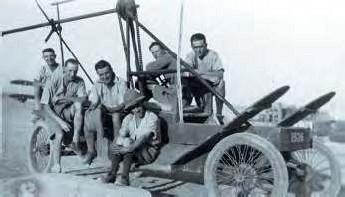
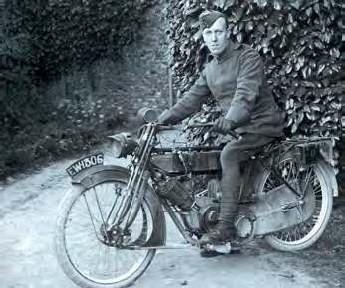

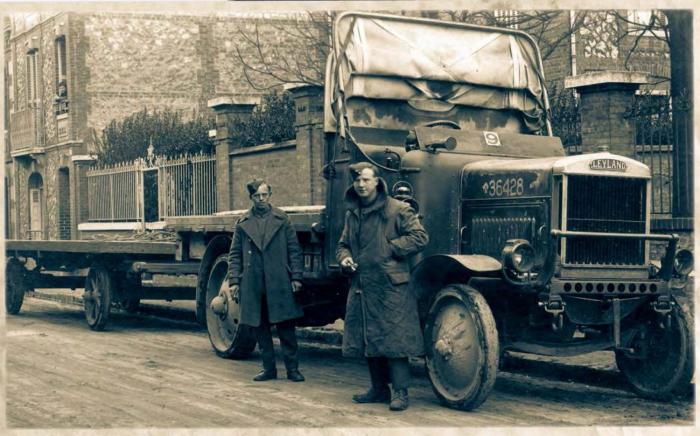
The RNAS did not seem to have such a well organised system for acquiring vehicles and seemed to rely on whatever was available at the time. This resulted in a very diverse fleet of predominantly US-built Pierce Arrow, Peerless, Seabrook and Jeffery with a few British-built Lacre trucks to keep them company.
For lighter transport, the Talbot and the Italian Lancia were favourites with perhaps the only crossover with the RFC being the Crossley tender of which the RNAS received just a handful. Predominantly operating from fixed coastal bases, the RNAS had less of a requirement for mobility as the RFC which had to be able to quickly advance or withdraw as the battle ebbed or flowed, so were perhaps less concerned about vehicle reliability.
The one exception to this was the rather unorthodox RNAS Armoured Car Section which was originally formed to pick up crew men who had been shot down over or near enemy territory. To do this they used a civilian Rolls-Royce and Mercedes car which received some rudimentary boiler-plate armour. This was followed by armouring Wolseley, Lanchester and Talbot cars; LGOC and AEC buses, Pierce Arrow, Seabrook and Peerless trucks which were fitted with machine guns and in the cases of the trucks, with light artillery pieces. Joining this group of ad-hoc vehicles would come Rolls-Royce and Lanchester armoured cars but by mid-1915 the role for armoured cars within the RNAS had come to an end and they were transferred to the army.
With the end of the war, the size of the RAF was slashed from more than 300,000 personnel to around 35,000. With such a reduction in size and no anticipation of a foreign war which would necessitate large numbers of mechanical transport there was no longer a requirement for the 23,260 vehicles then in service with the RAF and the majority of these were quickly disposed of. Naval aviation was split off in 1924 to create the Fleet Air Arm and a new rivalry with the RAF. All this change did little to prepare British military aviation in the run up to what would be an even more costly and deadlier war.
’With the end of the war, the size of the RAF was slashed from over 300,000 personnel to around 35,000’

